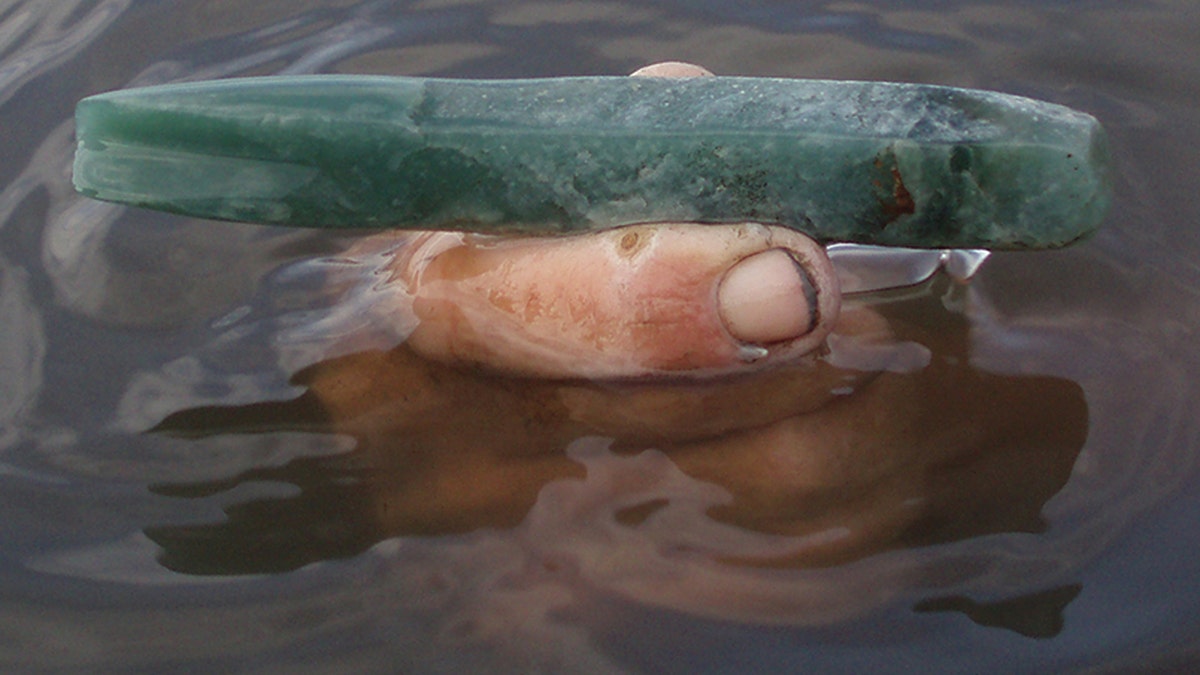Fox News Flash top headlines for May 21
Fox News Flash top headlines for May 21 are here. Check out what's clicking on Foxnews.com
Experts have discovered a unique ancient tool that was used by Maya salt workers more than 1,000 years ago.
Fashioned from the mineral jadeite, the chisel-style implement was found at the site of Ek Way Nal, a Maya salt works in southern Belize that is now submerged in a saltwater lagoon. The tool’s Honduras rosewood handle was also discovered, offering a glimpse into the ancient Maya culture.
INCREDIBLE MAYA DISCOVERY: ANCIENT KING'S MASK UNCOVERED IN MEXICO

The jadeite tool McKillop is the first of its kind recovered with its wooden handle intact. (Photo Credit: Heather McKillop, LSU.)
Surrounded by a forest, the lagoon’s soggy mangrove soil preserved the wooden handle. “This jadeite tool is the first of its kind that has been recovered with its wooden handle intact,” said anthropologist Heather McKillop of Louisiana State University, who led the research project, in a statement.
A paper on the research was published in the journal Antiquity.
The tool was analyzed at the American Museum of Natural History in New York. A paper on the discovery was recently published in the journal Antiquity.
MAYA ARTIFACTS USED IN RITUAL SACRIFICES DISCOVERED AT THE BOTTOM OF SACRED LAKE
The tool is the latest in a series of fascinating Maya discoveries across central America.

The jadeite tool was discovered in a Belize lagoon. (Heather McKillop, LSU.)
Last year an ancient mask depicting a 7th-century Maya king was discovered in southern Mexico.
MYSTERIOUS LOST MAYA CITIES DISCOVERED IN GUATEMALAN JUNGLE
Also in 2018, archaeologists harnessed sophisticated technology to reveal lost cities and thousands of ancient structures deep in the Guatemalan jungle, confirming that the Maya civilization was much larger than previously thought.
LiveScience reports that hundreds of Maya artifacts that may have been used in ritual animal sacrifices have also been discovered at the bottom of a Guatemalan lake.
CLICK HERE TO GET THE FOX NEWS APP
From its heart in what is now Guatemala, the Maya empire reached the peak of its power in the sixth century A.D., according to History.com, although most of the civilization’s cities were abandoned around 900 A.D.
The Associated Press contributed to this article. Follow James Rogers on Twitter @jamesjrogers

